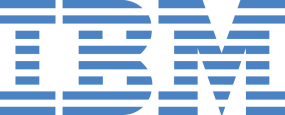This article has moved to the new Steveology Group website. Social media and content marketing
A content marketing framework (a standardized process) is basically something that will allow you to create as close to a close-loop system as your business will let you get. It’s the thing that allows you to develop a process that can be duplicated, not a like mechanism that just stamps out cookie-cutter content but are repeatable framework for any type of content to be better utilized.
Click To Tweet >>> Creating A Powerful Content Marketing Framework Part 1
Findability expert Erin Robbins O’Brien, the COO of GinzaMetrics in an interview explained, “It needs to incorporate goal setting at the beginning, and then an understanding from goal setting to how you’re going to put that into a strategy or a plan to roll out. Once you publish the content, you then must get feedback and optimize the content while it’s in market. Then, one has to take that “understanding” to create new content that would be even more effective for that market. Most enterprise companies move at a glacial pace. As a startup or midsized company you can iterate faster than a larger competitor and outmaneuver them.
Feedback From Internal Stakeholders
A good framework allows internal stakeholders from across a midsized organization’s different departments to give you feedback as well. An example is, if you’re in the marketing department, and you’ve created a case study or a white paper, you send that out.
Then your sales team gets on the phone with people that downloaded that digital asset, and gathers specific questions are coming up. You want to be able to have that valuable information shared back with you. Now when you create new content, you’re creating it based on real conversations that people are having and real issues that they’re bringing up.
Capture And Loop-In Insights Gleaned From The Customer-Facing Roles
Same thing for your community managers and customer service agents. A lot of times marketing forgets them when they create all this new content; however, they both are on the front lines of getting comments and feedback from your new content.
If you have included them, that helps close the loop. Now you’ve got market feedback and measurement combined. You’ve got internal feedback and measurement combined. Together, you take those learnings and this close-loop system, and apply those insights to future marketing efforts for content marketing domination, or at least your best version of that.
Components Of A Good Content Marketing Framework
It starts with goal setting. You’re going to need to make sure that you have the ability to clearly understand what your organization’s business goals are, and that you understand what your department’s goals are and how they dovetail. Once you’ve understand those, you can talk about what real/actual content you need to create to achieve those.
That means you have to understand marketing strategy and company goals as they evolve. There should be a place for a shared document like a Google Doc, or use an internal sharing service, where you can really discuss and update goals regularly.
Map Your KPIs To Your Business Objective Numbers
If your goals include target numbers, which a lot of times there are, make sure that you understand how you will connect your actions to those targets. What are the expectations of your marketing content campaigns and how are they going to to help meet those goals. From there, you can develop KPIs.
If your company’s goal is $1 billion in revenue, that’s too meta for you to say, “From my content marketing campaign, I’m just going to draw a direct line to this $1 billion.” What you need to do is set some measurements like,” I’ll create this content and it should get X amount of engagement here, and based on our historically numbers, that drives this much of conversions there, et cetera, et cetera.”
Whatever analytics, platforms, and systems you have, you need access to those. You need to be able to tie them together.If there are ways to set goals within the analytic system that most closely match your organization’s goals and your department’s KPIs, you need to set those up at the end section of the campaign from the start. It’s a pain to add them later and it means you also missed valuable data.
Who’s On First?
Also, somebody needs to be responsible for actually looking at these datapoints constantly during the campaigns. Erin goes on to say, “It sounds super basic but I can’t tell you how many people I know that have analytics platforms and they don’t really ever look at them. Maybe they look at them when a boss says, ‘I need to know this.’ Then they just go in, they get that one number and then they regurgitate it back out. But it’s like, well, all this data is here to help make your life better, to help you make smarter choices. Let’s do a little something with it!”
In terms of getting other departments involved, it’s about fostering people skills. That may be hard for a lot of people, but you got to go sometimes and shake hands with your colleagues in other departments. Meet with them. Pick up the phone and talk to them and explain what they’re going to get out of it.
Think Small Connections To Win Big
Midsized companies can often fall prey to silofication like their larger competitors. However, you can quickly break these walls down for a strategic advantage, whereas large companies are too entrenched to respond with agility.
You need a value proposition for the fact that your interdepartmental colleagues are going to take a few minutes every week, or month or whatever, to share their experiences with you. Whether it’s through their own analytic system or through just a quick 20-minute phone call one Friday a month where somebody can just tell you, “Here’s what I’m hearing.”
By doing this you should be able to promise them to deliver better content. From that you should be able to deliver more qualified leads, and a better experience on your end. Not only is your own job better, but your entire department will look better because you’re on target to achieve a better starting point with for your customer’s journey.
This is from an interview I had with Erin Robbins O’Brien, COO of GinzaMetrics. You can watch the complete interview here
About The Author
Steve Farnsworth is a Demand Generation Strategist for The @Steveology Group: A Content Marketing agency that drive sales and dominate markets for high tech B2B. You can contact Steve or connect with him on Twitter as @Steveology.
 Awesome Sponsor
Awesome Sponsor
This post was brought to you by IBM for Midsize Business and opinions are my own. To read more on this topic, visit IBM’s Midsize Insider. Dedicated to providing businesses with expertise, solutions and tools that are specific to small and midsized companies, the Midsize Business program provides businesses with the materials and knowledge they need to become engines of a smarter planet.And a special thank you for the very cool team at Racepoint Global for their outstanding work and continued support.




Alex Chaidaroglou
October 10, 2014
Great article Steve, very well put. I like to use google spreadsheets for goal tracking, metrics and the rest. Tracking them is vital.
In fact, Content Marketing Institution published recently a survey, that about 1/3 of content marketers don’t have a written strategy. A great percentage in my opinion, but at least it is lower than the previous survey.
Looking forward to part 2.
Steve Farnsworth A.K.A. @Steveology
October 10, 2014
Agreed, but that’s a tough one. I think you need to have thought through and agreed on your content marketing strategy, but in some organization the “documentation” becomes this huge, cast in concrete tome that no one ever reads. I think if you can get your plan down to two pages, absolutely!
Alex Chaidaroglou
October 10, 2014
Indeed, sometimes it can become bureaucratic… I agree, 1 excel spreadsheet or 1-2 pages are just fine!